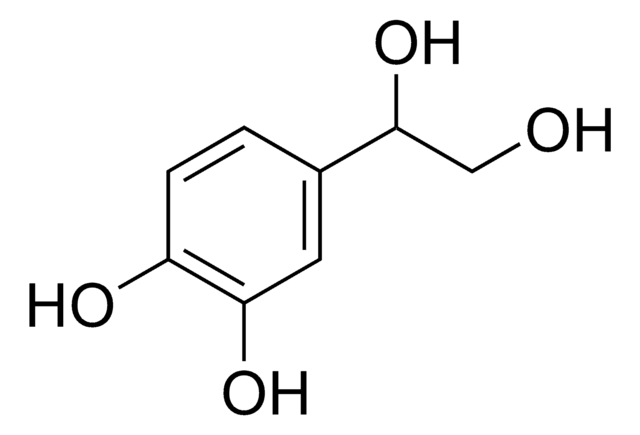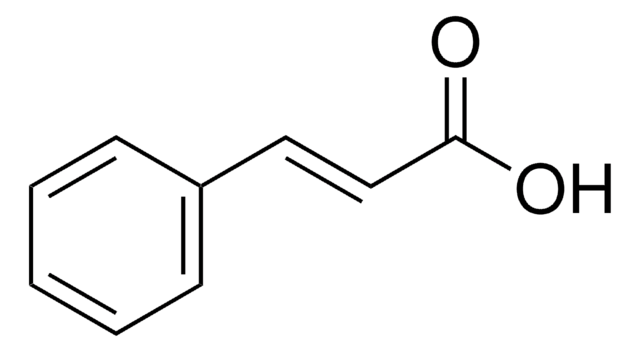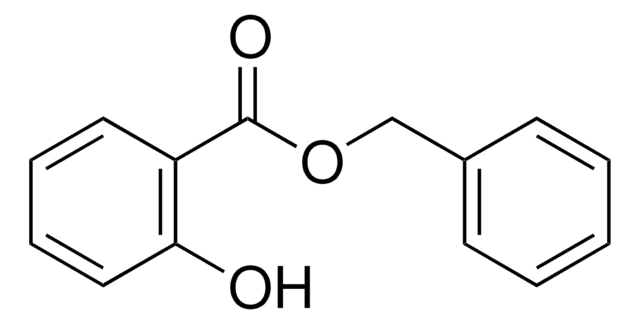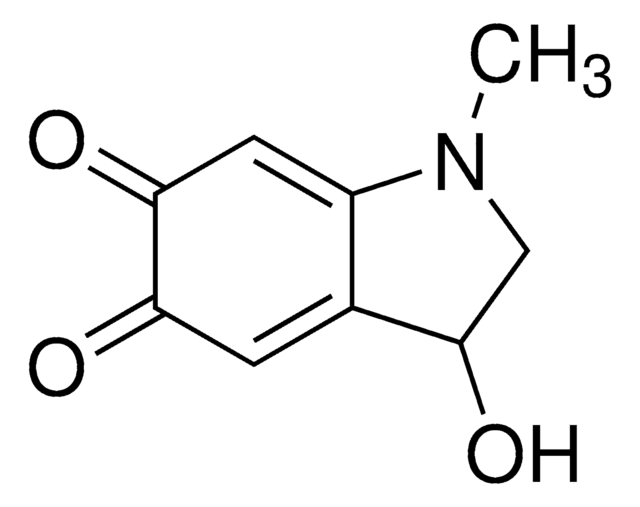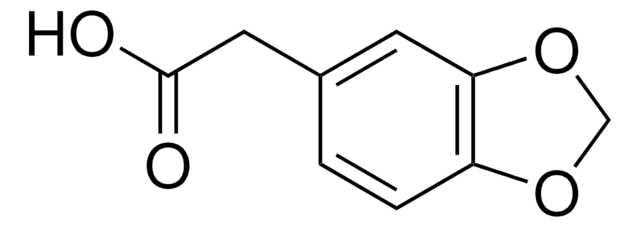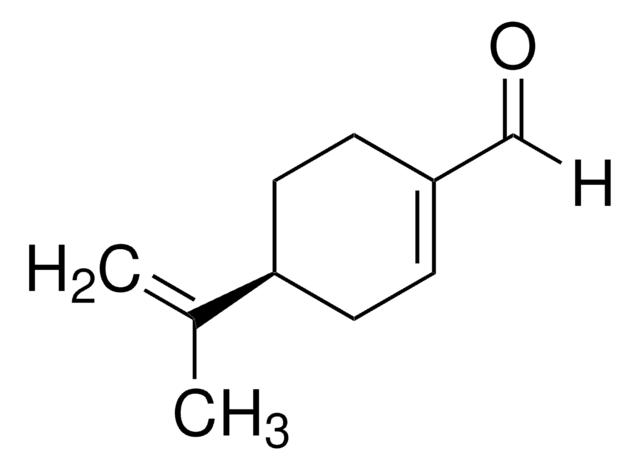About This Item
Fórmula linear:
(HO)2C6H3CH(OH)CO2H
Número CAS:
Peso molecular:
184.15
Número CE:
Número MDL:
Código UNSPSC:
12352100
ID de substância PubChem:
NACRES:
NA.22
Ensaio:
95%
Produtos recomendados
Nível de qualidade
Ensaio
95%
pf
136-137 °C (dec.) (lit.)
grupo funcional
carboxylic acid
hydroxyl
cadeia de caracteres SMILES
OC(C(O)=O)c1ccc(O)c(O)c1
InChI
1S/C8H8O5/c9-5-2-1-4(3-6(5)10)7(11)8(12)13/h1-3,7,9-11H,(H,12,13)
chave InChI
RGHMISIYKIHAJW-UHFFFAOYSA-N
Procurando produtos similares? Visita Guia de comparação de produtos
Categorias relacionadas
Descrição geral
Metabolite of norepinephrine.
Aplicação
DL-3,4-Dihydroxymandelic acid was used in the simultaneous analysis of 4-hydroxy-3-methoxymandelic acid and 4-hydroxy- 3-methoxyphenylacetic acid in urine. It was also used to study the changes in body temperature.
Palavra indicadora
Warning
Frases de perigo
Declarações de precaução
Classificações de perigo
Eye Irrit. 2 - Skin Irrit. 2 - STOT SE 3
Órgãos-alvo
Respiratory system
Código de classe de armazenamento
11 - Combustible Solids
Classe de risco de água (WGK)
WGK 3
Ponto de fulgor (°F)
Not applicable
Ponto de fulgor (°C)
Not applicable
Equipamento de proteção individual
dust mask type N95 (US), Eyeshields, Gloves
Escolha uma das versões mais recentes:
Já possui este produto?
Encontre a documentação dos produtos que você adquiriu recentemente na biblioteca de documentos.
Os clientes também visualizaram
W X Dong et al.
Journal of the autonomic nervous system, 44(2-3), 109-117 (1993-08-01)
Pre-synaptic endings of the sympathetic nervous fibers control the metabolism of catecholamines, particularly inactivating norepinephrine after its neuronal recapture. The present study was carried out to investigate this segment of the metabolism of catecholamines through measurements of DHPG, DOMA and
S J Ley et al.
Research in veterinary science, 61(2), 172-173 (1996-09-01)
The threshold response to a mechanical nociceptive stimulus was significantly lower on the lame hind limb of lame cows than on the same limb of sound cows. There were no significant differences between the concentrations of cortisol, noradrenaline, adrenaline or
K E O'Connor et al.
Journal of bacteriology, 183(3), 928-933 (2001-02-24)
Pseudomonas putida F6 was found to metabolize p-hydroxyphenylacetic acid through 3,4-dihydroxyphenylacetic acid, 3,4-dihydroxymandelic acid, and 3,4-dihydroxybenzaldehyde. Cell extracts of P. putida F6 catalyze the NAD(P)H-independent hydroxylation of p-hydroxyphenylacetic acid to 3,4-dihydroxyphenylacetic acid which is further oxidized to 3,4-dihydroxymandelic acid. Oxidation
T R Kingsley et al.
Journal of gerontology, 46(4), B135-B141 (1991-07-01)
Adrenal catecholamines (CA) were measured in 6-, 18-, and 30-mo Lobund-Wistar rats (LWR) maintained under germ-free or conventional conditions and fed either ad libitum or a restricted (70% of adult ad libitum) diet. Levels of dopamine (DA), norepinephrine (NE), epinephrine
T H Czapla et al.
Biochimica et biophysica acta, 1077(3), 400-406 (1991-04-29)
Cyclic voltammetric and chronoamperometric data are consistent with a process in which 3,4-dihydroxymandelic acid (DOMA) is oxidized initially in a two-electron step to its corresponding o-benzoquinone. This species is unstable and undergoes the rate-determining loss of CO2 (k = 1.6
Nossa equipe de cientistas tem experiência em todas as áreas de pesquisa, incluindo Life Sciences, ciência de materiais, síntese química, cromatografia, química analítica e muitas outras.
Entre em contato com a assistência técnica
